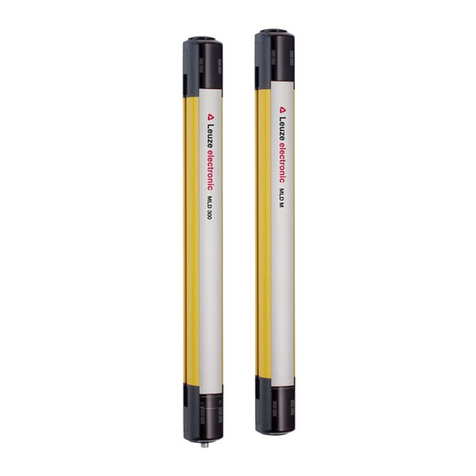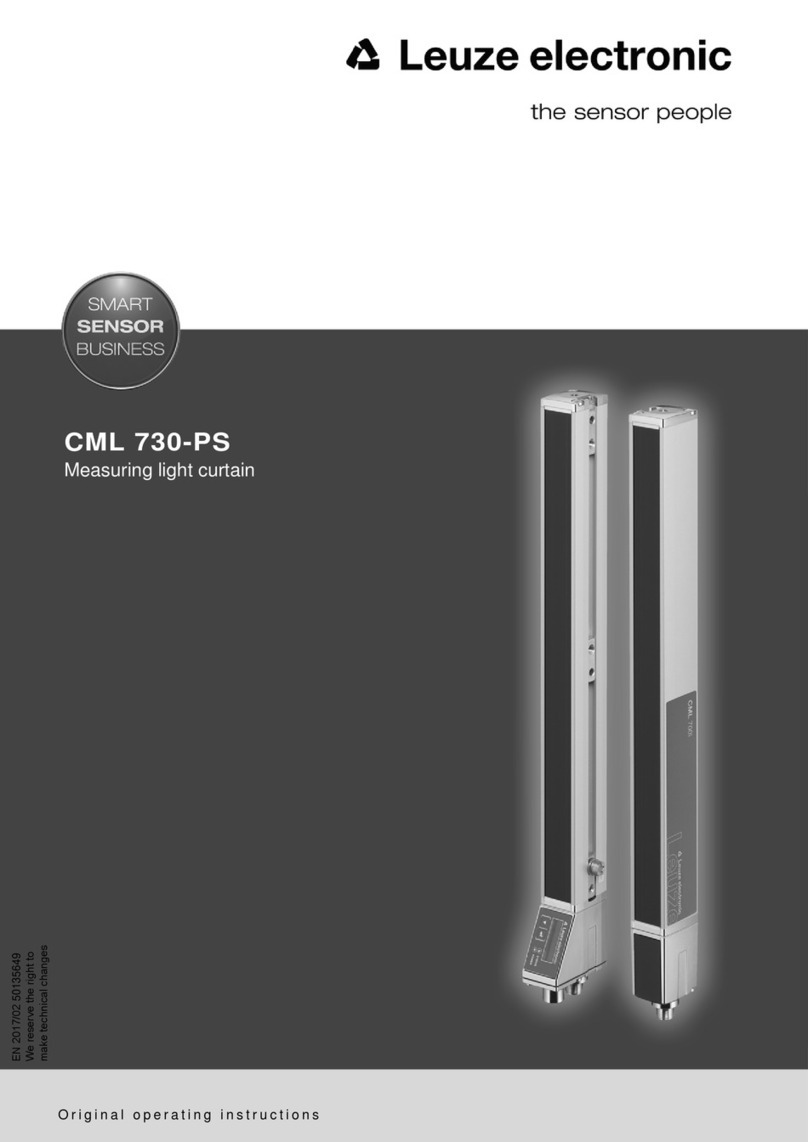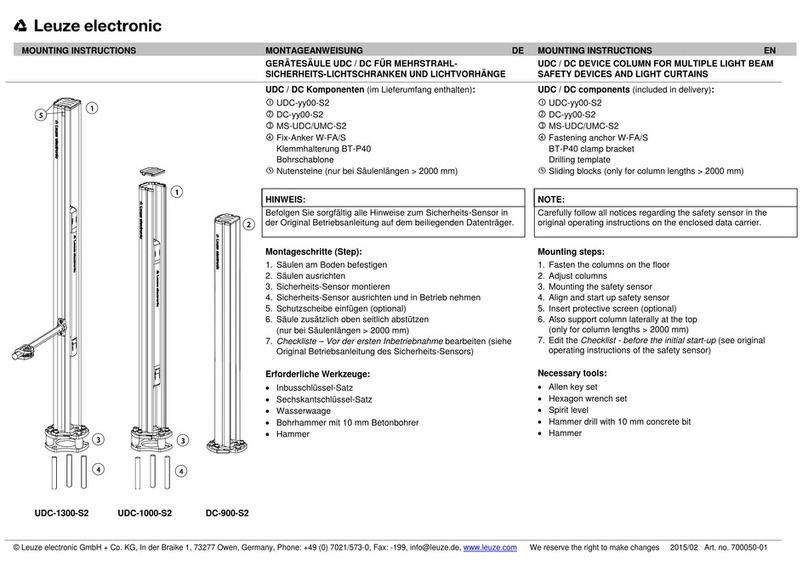
Table of contents
Leuze electronic GmbH + Co. KG IPS 458i 4
7 Electrical connection..........................................................................................30
7.1 Overview............................................................................................................................... 30
7.2 PWR/SWI/SWO – voltage supply and switching inputs/outputs........................................... 31
7.3 HOST - Host input / Ethernet................................................................................................ 34
7.4 Ethernet star topology...........................................................................................................34
7.5 Cable lengths and shielding.................................................................................................. 36
7.6 Connecting positioning sensor to Ethernet switch ................................................................ 36
8 Starting up the device – Basic configuration...................................................37
8.1 Measures to be performed prior to the initial commissioning ............................................... 37
8.2 Starting the device ................................................................................................................37
8.3 Configuring and aligning the device via control buttons ....................................................... 38
8.4 Setting the communication parameters ................................................................................ 38
8.4.1 Manually setting the IP address ........................................................................................39
8.4.2 Automatically setting the IP address .................................................................................39
8.4.3 Address Link Label............................................................................................................40
8.4.4 Ethernet host communication............................................................................................40
8.4.5 FTP client ..........................................................................................................................41
8.5 Configuration via configuration codes................................................................................... 41
8.6 Activating device functions ................................................................................................... 42
9 Starting up the device – Leuze webConfig tool ...............................................43
9.1 System requirements............................................................................................................ 43
9.2 Start webConfig tool ............................................................................................................. 43
9.3 Short description of the webConfigtool ................................................................................44
9.3.1 Change operating mode....................................................................................................45
9.3.2 Menu options of the webConfig tool ..................................................................................45
9.3.3 CONFIGURATION menu ..................................................................................................46
9.3.4 Configuring applications with the wizard ...........................................................................47
9.4 Configuring compartment fine positioning ............................................................................ 47
9.4.1 Selecting the program .......................................................................................................47
9.4.2 Configuring image acquisition ...........................................................................................48
9.4.3 Configuring markers ..........................................................................................................49
9.4.4 Assigning measurement values to digital switching outputs .............................................50
9.4.5 Outputting measurement values via Ethernet ...................................................................51
10 EtherNet/IP...........................................................................................................52
10.1 Overview............................................................................................................................... 52
10.2 Manually setting the IP address............................................................................................ 53
10.3 Configuration for a Rockwell control without EDS support ................................................... 54
10.4 Configuration for a Rockwell control with EDS support ........................................................ 55
10.5 EDS file................................................................................................................................. 56
10.6 EDS object classes............................................................................................................... 56
10.6.1 Class1 – Identity object ....................................................................................................56
10.6.2 Class4 – Assembly...........................................................................................................57
10.6.3 Class103 – I/O status and control ....................................................................................64
10.6.4 Class106 – Activation.......................................................................................................66
10.6.5 Class107 – Result data ....................................................................................................67
10.6.6 Class108 – Entry data ......................................................................................................69
10.6.7 Class109 – Device status and device control...................................................................72
10.6.8 Class110 – Device application status and control............................................................73
10.6.9 Class 111 – Position deviation ..........................................................................................74
10.6.10 Example configuration.......................................................................................................75































